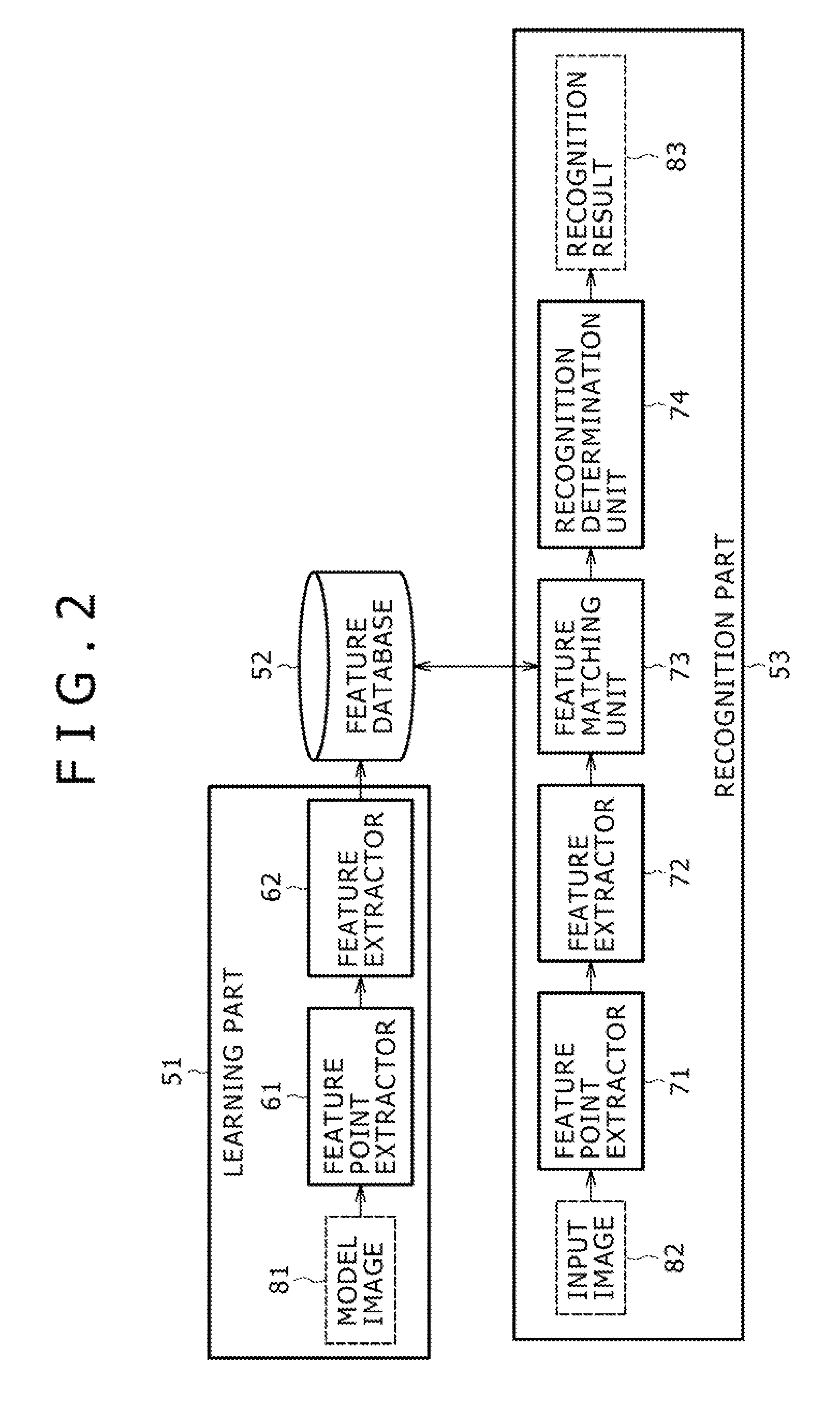[0020] An invention similarly having this aim of the present invention has been applied by the present assignee and disclosed in Japanese Patent Laid-open No. 2004-326693. The present invention is to add an
advantage that matching accuracy can be further enhanced to advantages by the invention disclosed in Japanese Patent Laid-open No. 2004-326693. Advantageous effects by the present invention become more obvious when the difference in the image angle is large between a model image and an input image in particular.
[0021] According to one embodiment of the present invention, there is provided an information
processing device that compares an input image with a model image. The device includes a storage configured to hold a feature of each of at least one model feature point on the model image and hold a feature of each of at least one model feature point one each of N (N is an integer value equal to or larger than one) transformed images that are each obtainable through transformation of the model
image based on a respective one of N transformation coefficients, an object feature point extractor configured to extract at least one feature point on the input image as an object feature point, an object feature extractor configured to extract a feature of each of the at least one object feature point extracted by the feature point extractor, and a feature
comparator configured to compare each of the at least one object feature point of which feature has been extracted by the object feature extractor with each of the at least one model feature point held by the storage about each of the model image and the N transformed images, and creates at least one match pair between an object feature point and a model feature point having the features that have been determined to be similar to each other through the comparison.
[0022] According to one embodiment of the present invention, there is provided an information processing method of an information processing device that compares an input image with a model image. The method includes the steps of holding a feature of each of at least one model feature point on the model image and holding a feature of each of at least one model feature point on each of N (N is an integer value equal to or larger than one) transformed images that are each obtainable through transformation of the model
image based on a respective one of N transformation coefficients, extracting at least one feature point on the input image as an object feature point, extracting a feature of each of the extracted at least one object feature point, and comparing each of the at least one object feature point of which feature has been extracted with each of the held at least one model feature point of each of the model image and the N transformed images, and creating at least one match pair between an object feature point and a model feature point having the features that have been determined to be similar to each other through the comparison.
[0023] According to one embodiment of the present invention, there is provided a program corresponding to the above-described information processing method according to one embodiment of the present invention.
[0024] In the information processing device, information processing method, and program according to one embodiment of the present invention, comparison between an input image and a model image is carried out in the following manner. Specifically, a feature of each of at least one model feature point on the model image is held, and a feature of each of at least one model feature point on each of N (N is an integer value equal to or larger than one) transformed images that are each obtainable through transformation of the model
image based on a respective one of N transformation coefficients is held. Furthermore, at least one feature point on the input image is extracted as an object feature point, and a feature of each of the extracted at least one object feature point is extracted. Moreover, each of the at least one object feature point of which feature has been extracted is compared with each of the held at least one model feature point of each of the model image and the N transformed images, and at least one match pair is created between an object feature point and a model feature point having the features that have been determined to be similar to each other through the comparison.
[0025] The embodiments of the present invention can address the need to allow detection of an object even from an input image that includes plural objects partially overlapping with each other, and allow stable detection of an object even against a viewpoint change (
image transformation including translation, scaling, rotation, and stretch),
luminosity change, and deformation of image information due to
noise. In particular, the embodiments of the present invention can enhance the accuracy of matching between an input image and a model image even when the difference in the imaging angle is large between the model image and the input image.
 Login to View More
Login to View More  Login to View More
Login to View More 


